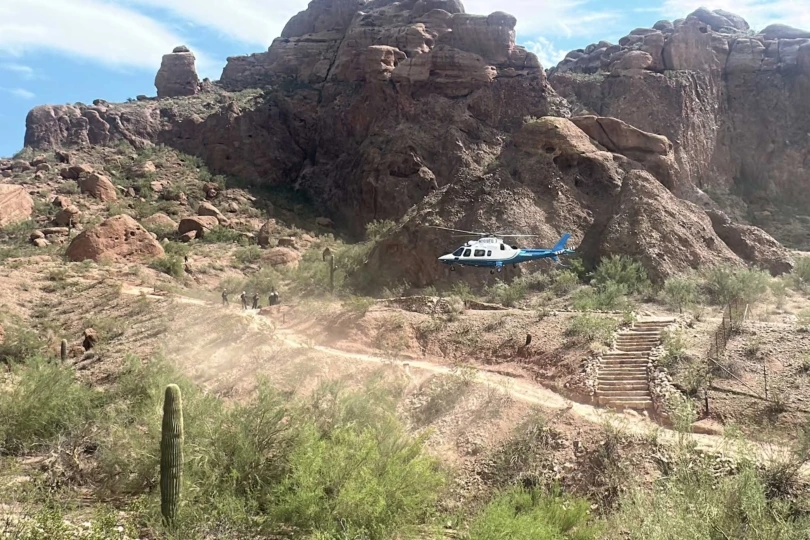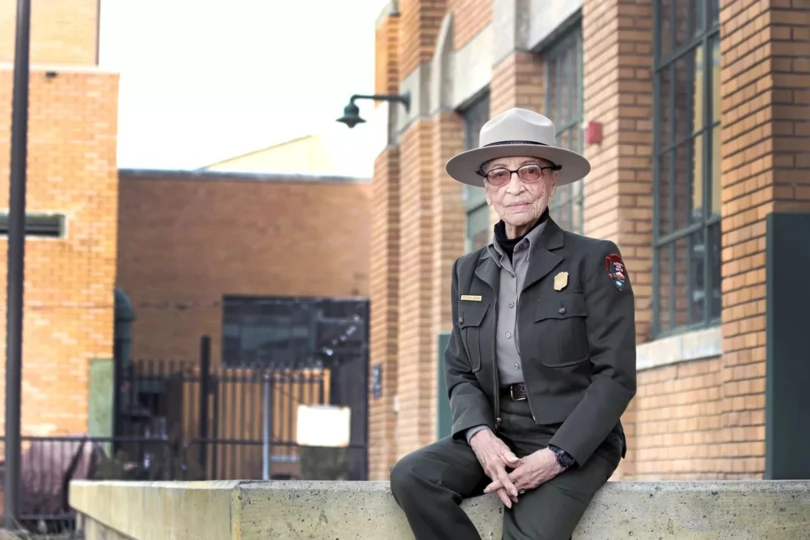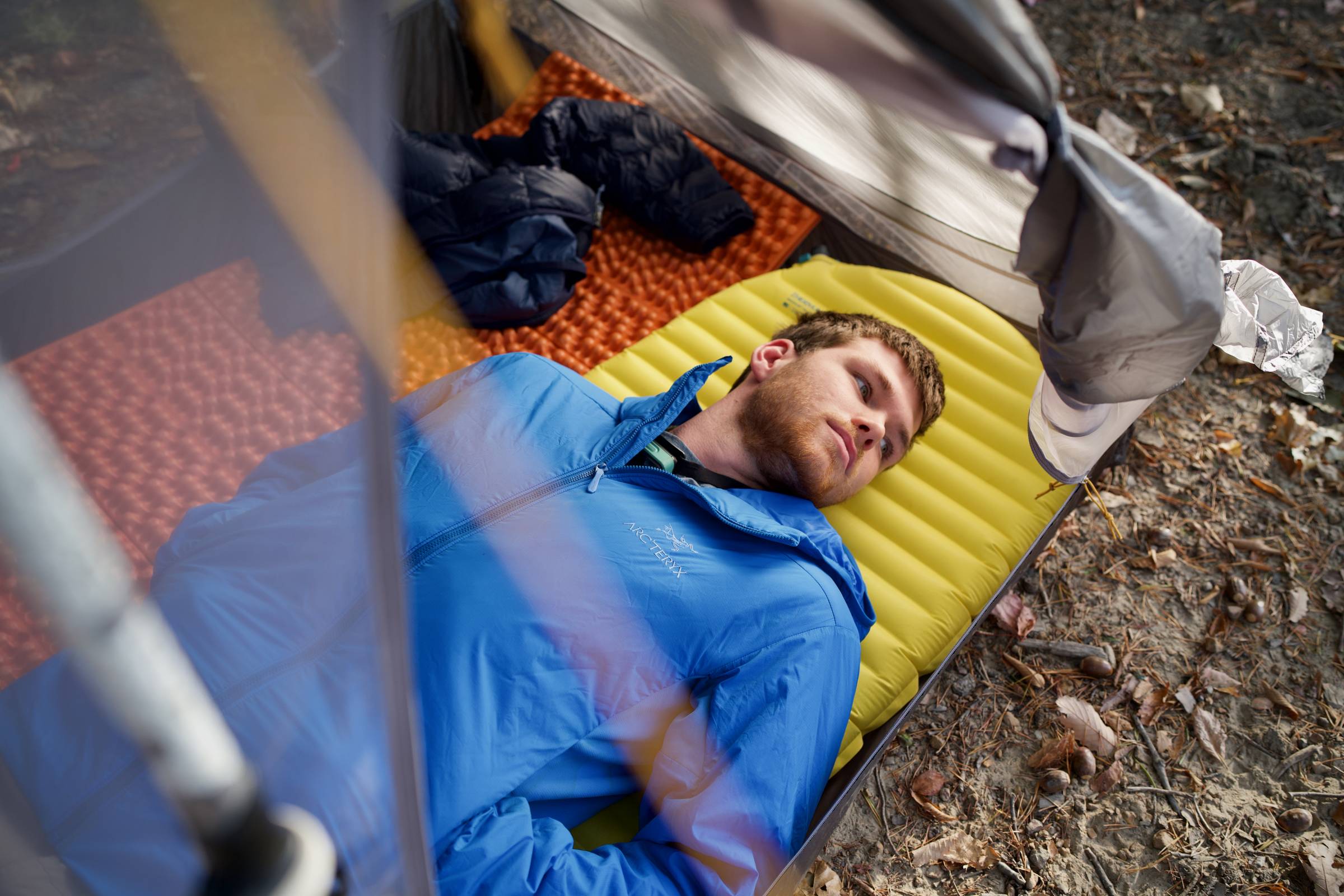Most travelers visit New Orleans for the music, food, and culture. But the natural beauty of the area’s bayous and nature preserves are the Big Easy’s unspoken attractions.
I’ve always felt a strong and inexplicable connection to New Orleans. But my previous visits there had been limited to urban explorations to listen to music, eat great food, and enjoy a cultural melting pot. But I wanted to see the natural side of the city — the other wild side.
So, I convinced my friend Karen to join me on a Louisiana adventure seeking the southern beauty of the natural areas around New Orleans.
We weren’t disappointed. Between all of the waterway activities, and hiking and biking trails we discovered, I may have found my new favorite side of the city.
A Guide to the Natural Areas Around the Big Easy
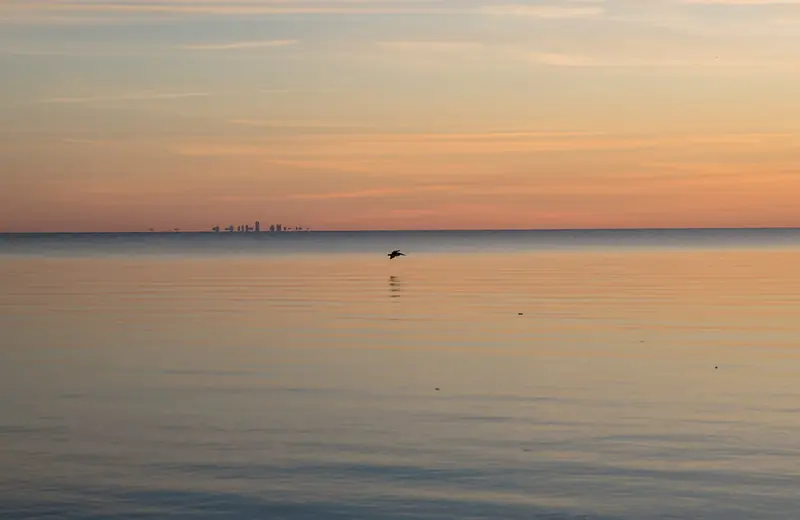
Exploring the Waterways
New Orleans is surrounded by water. The Mississippi River famously snakes an S-curve around the center of the action, and the vast Lake Pontchartrain borders the north.
The quiet, natural beauty of St. Tammany Parish on the Northshore of Lake Pontchartrain is easily accessed via the 24-mile Lake Pontchartrain Causeway, one of the longest bridges in the world.
The “Northshore” (as locals call it) is essentially a bedroom community of New Orleans. But it feels like it’s a world away from the hustle and bustle of the Big Easy.
Canoe & Trail Adventures operates a twilight-to-moonlight paddle through Cane Bayou and out to Lake Pontchartrain. A bayou is a slow-moving creek or swampy section of a river that can contain freshwater, salt water or brackish water (a combination of the two).
Often densely forested, the bayous of Louisiana are dotted with mystical cypress trees that drip with long, green lichens — commonly known as Spanish moss. That gives the silent, winding waterways an otherworldly feel.
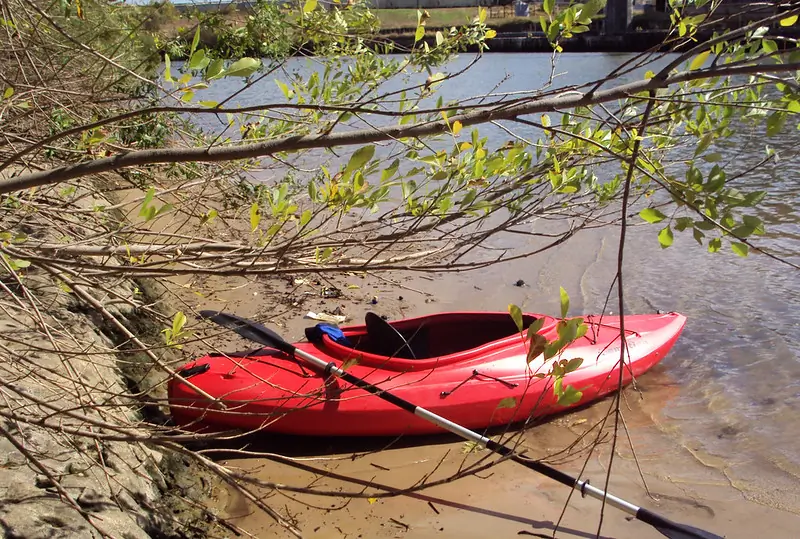
Kayaking in New Orleans’ Fontainebleau State Park
We met our Louisiana naturalist guide, Matt, in Fontainebleau State Park for the kayak put in. Canoe & Trail Adventures brought most of the supplies we needed. They brought decent-smelling bug spray (a must after sunset), dry bags, and, of course, kayaks, paddles, and life jackets for our exploration.
As we paddled, Matt gave a master class on the natural environments of the bayou, animals, and plant life that lives there.
Cane Bayou converges diverse ecosystems, creating a rich habitat for as many of 400 species of birds and other wildlife. Of all the bayous that flow into Lake Pontchartrain, Cane Bayou is the most pristine — and remains virtually untouched by the impacts of human development.
We felt the wind waves off of the lake before we could see where Cane Bayou spills into Lake Pontchartrain. With a little time before sunset, we kayak-surfed the waves and got properly soaked. Standing on the marshy shore, the five of us stood in silence as we watched the sun dip down below the horizon.
I loved the paddle back in the dwindling light; my companions were a little less eager to experience an alligator encounter in the dark. We didn’t end up seeing any gator friends that evening, but the silent, darkening beauty of the bayou is something I won’t soon forget.
Kayaking in Other Bayous
Another option for bayou exploration is to head about an hour south of New Orleans to Lafourche Parish. At the Nicholls Bayou Side Park, the new self-service SUP and kayak rental Geaux Paddle offers visitors an easy way to explore Bayou Lafourche.
Once you book your vessel online, Geaux Paddle will send you a code to unlock your boat and away you go.
What to bring kayaking in Louisiana:
- Sunscreen
- Bug spray
- A hat and sunglasses
- Binoculars (for bird-watching and wildlife viewing)
- Drybags (most tour operators will have drybags, but it never hurts to bring your own)
- Water
Exploring the Trails
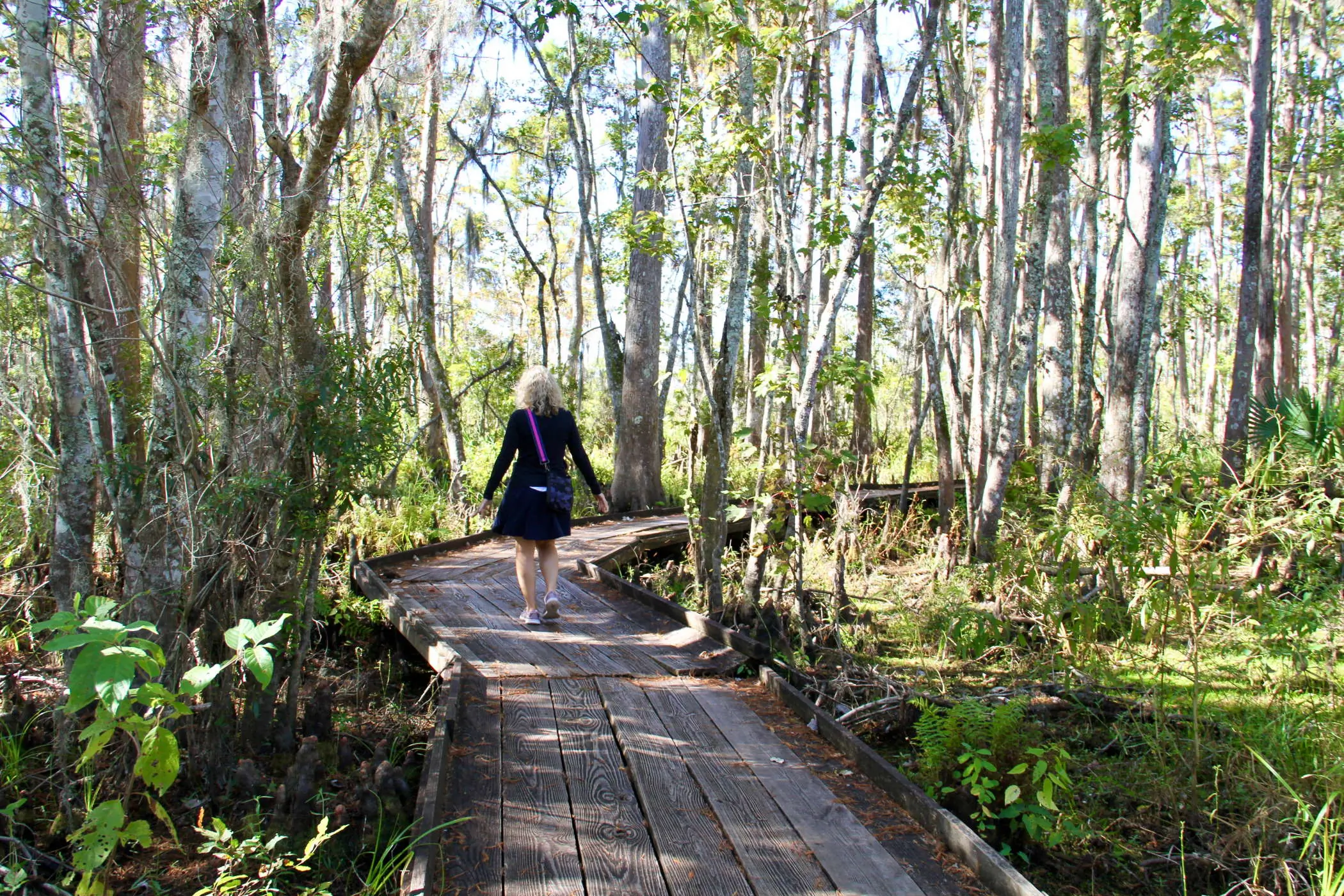



The Barataria Preserve is home to some of the best hiking trails around New Orleans. The mission of the Barataria Preserve is to maintain representative examples of the Mississippi Delta’s forests, bayous, swamps, and marshes. It is one of six sites in and around New Orleans that make up the Jean Lafitte National Historical Park and Preserve.
From New Orleans, head south over the Huey P. Long Bridge. Cross the Mississippi River into Jefferson Parish for a 40-minute scenic drive to the 23,000-acre Louisiana Wetland Preserve.
There are about 8 miles of trails in the Barataria Preserve, with plenty of opportunities to see the resident alligators and over 200 species of birds. Many of the trails are made up of boardwalks. Hikers can safely explore long stretches of marshland and swamps without getting wet and muddy.
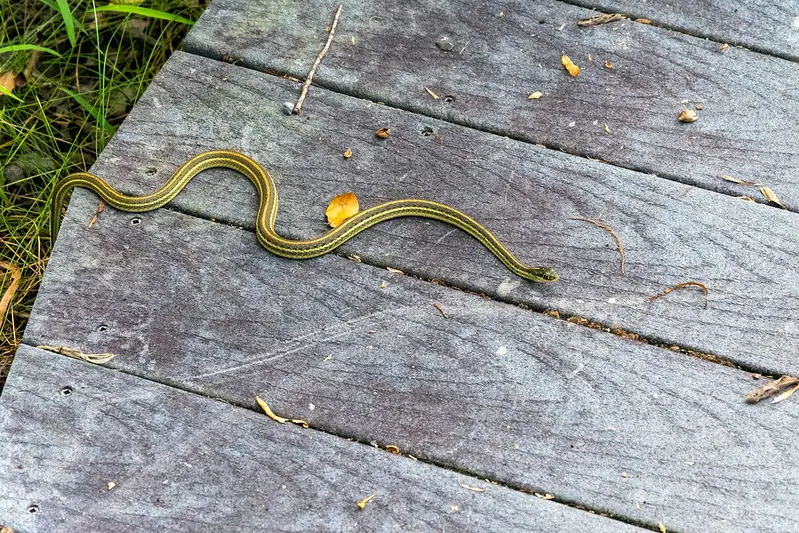



The elevation gain is negligible, and the hiking is easy and flat. That makes all the preserve trails accessible for hikers and nature enthusiasts of all ages and fitness levels.
Barataria Preserve also offers a unique opportunity to view alligators up close. All along the trails, the soft, marshy ground is a perfect spot for a reptilian nap. Alligators can grow from 6 to 11 feet long and can weigh up to 1,000 pounds.
At one point in time, alligators were endangered here, but not anymore. Today they are thriving in the freshwater lakes and bayous throughout the southern gulf states.
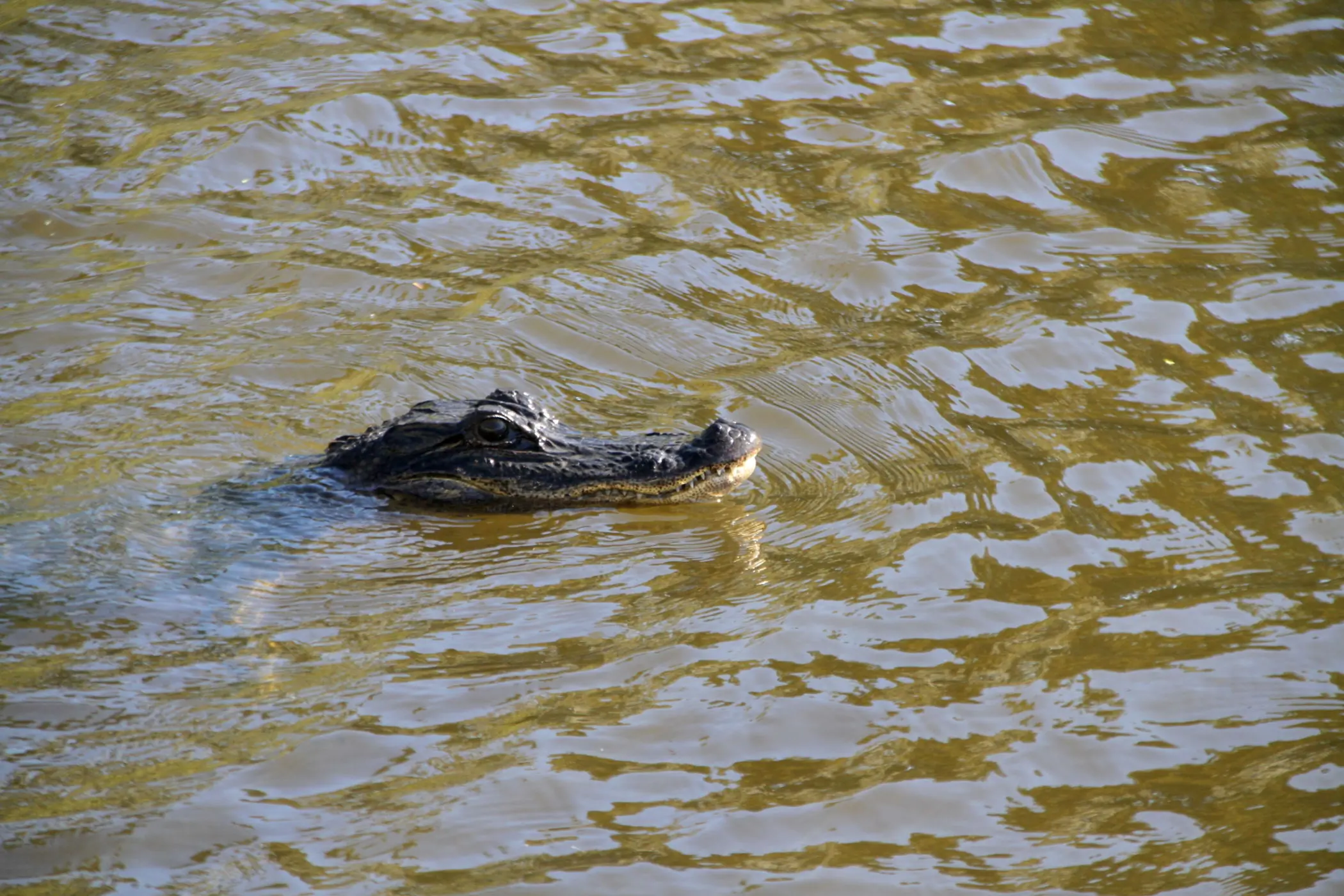



Hiking Tips
- A car is essential to access most of the natural areas around New Orleans. This is especially true for the Barataria Preserve.
- Practice good trail etiquette and be sure to “leave no trace” by packing out all your garbage, being respectful to all on busy trails, and following all posted rules.
- Pets are allowed in Barataria Preserve. However, we met a woman who told us her 10-pound dog was snatched by an alligator after the dog jumped off of one of the boardwalk walking trails. So bring your pets at your own risk.
Exploring by Bike
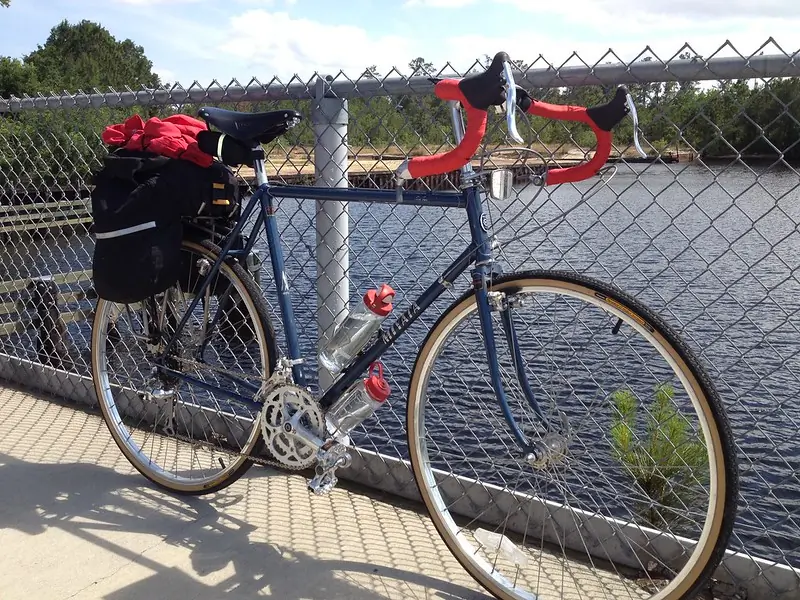



The 31-mile St. Tammany Trace is Louisiana’s first rail-to-trail. Locally known as “the Trace” (because the trail traces a line through the entire parish), the trail weaves through the communities of Covington, Abita Springs, Mandeville, and Lacombe, ending in Slidell.
The asphalted, auto-free trail was created when St. Tammany Parish purchased the abandoned Illinois Central Railroad corridor back in 1992.
Most cyclists start out their Tammany Trace ride in the postcard perfect town of Covington, Louisiana. You can rent bikes from the friendly folks at Brooks’ Bike Shop. Their rental fleet includes heavy one-speed comfort cruisers complete with finders and a basket as well as multispeed bicycles. I highly recommend the multispeed option; the cruisers are pretty slow and clunky.
The trail itself is wide, flat, and paved — making for an easy ride. There are some four-way stops as The Trace winds through the various Northshore communities. They’re all well-marked, and drivers are generally courteous and respectful of cyclists.
Once you get to the town of Mandeville, you can turn off The Trace and ogle the gigantic homes perched along Lakeshore Drive on Lake Pontchartrain.
The town of Abita Springs offers a couple of worthy stops: the bizarre and funky Abita Mystery House’s collection of folk art, miniatures, and oddities, for one. Also located in Abita Springs is the fantastic Abita Brew Pub. It’s a perfect post-bike-ride lunch spot for Cajun specialties and Abita’s excellent microbrews.
The Wild Side of New Orleans
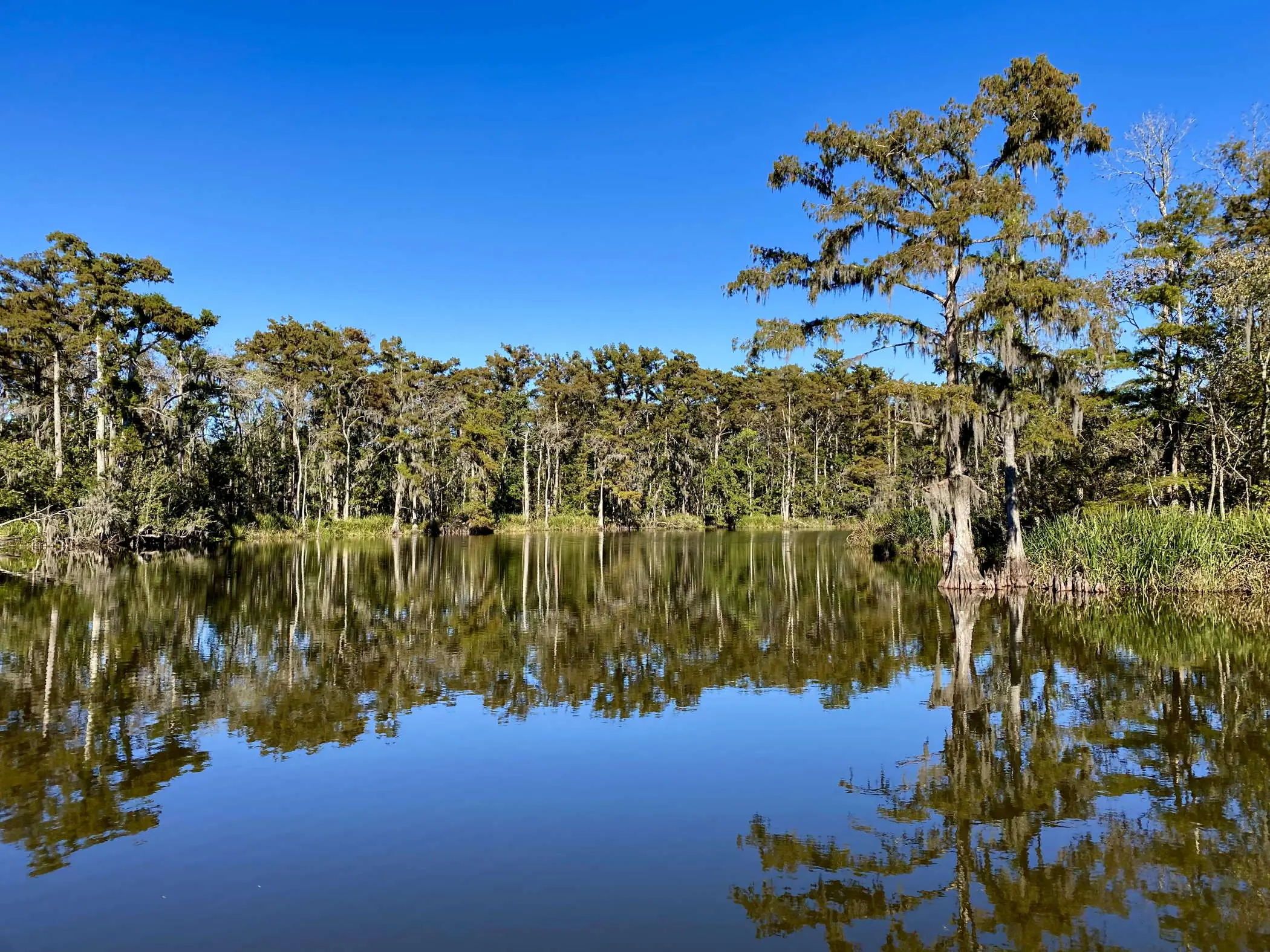



Seeking out the natural areas in and around New Orleans helps us understand how the land shaped this complex and multifaceted American city.
From the dark swamps to the cypress tree-lined bayous to the renovated old industrial corridors, it’s a region that is totally unique. And one that stimulates the imagination to no end, when you’re out kayaking, hiking, and biking around it. The magic of New Orleans’ other wild side is a song that never ends.

